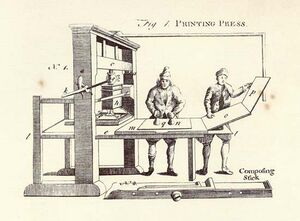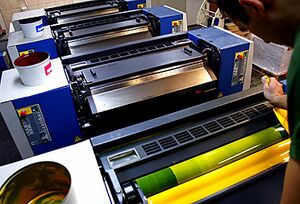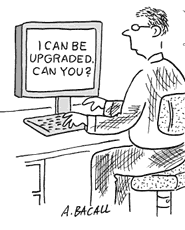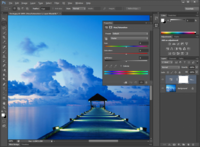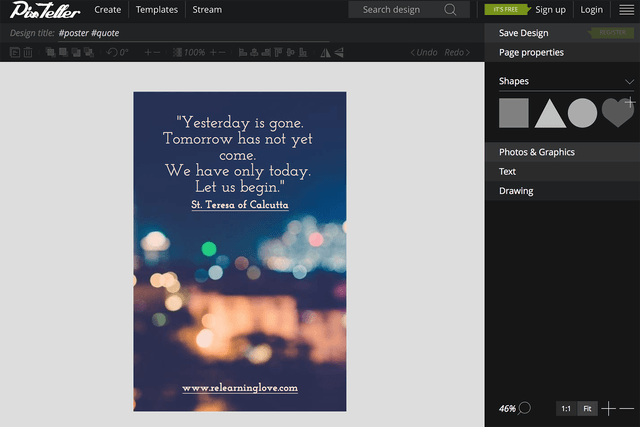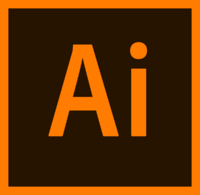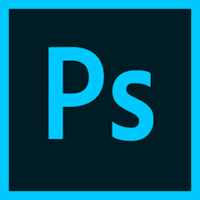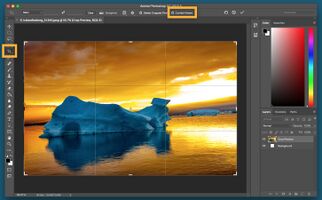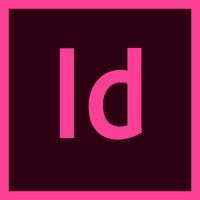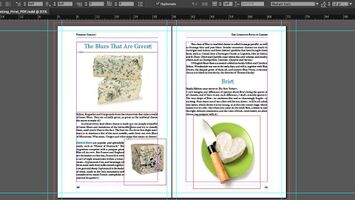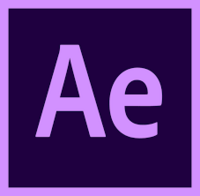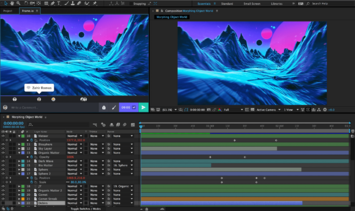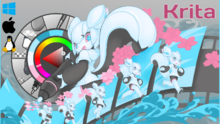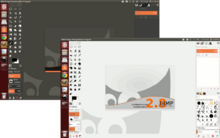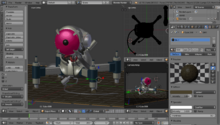Graphic Design
History
Graphic design (also known as communication design) is the art of projecting ideas and experiences through visual and textual context. [1] This includes images, words, graphic art, etc. to convey a message in either a physical or virtual manner. The term graphic design can refer to a number of artistic and professional disciplines which focus on visual communication and presentation. Various methods are used to create and combine symbols, images and/or words to create a visual representation of ideas and messages. Design is everywhere we look, and someone designed everything in our world, both good and bad design alike. People design for many different reasons. It can be for advertising, educational, cultural, political, or social use.
Graphic design can be dated back to the Middle Ages in ancient China, Egypt, Greece, and Rome. Manuscripts can be found from these periods of times and the creators of those manuscripts, scribes, and illustrators, combined the use of text and images to convey their ideas. The ancient Egyptian Book of the Dead is one example, where the hieroglyphics provide an effective understanding of what was intended to help those in the afterlife. In Europe, scribes who were knowledgeable in Greek and Latin would be in charge of creating the content, design, and production while illustrators, also known as illuminators, created images to accentuate the text.
Typographer William A. Dwiggins coined the term graphic design in 1922 as the profession emerged as more and more people skilled in the field were hired by advertising agencies, book publishers, and magazines. [2]
What is the purpose of Graphic design
Graphic design is visual problem solving using text or graphical elements. The goal is to create something that is pleasing to the eye, and gets the attention of the viewer. Besides the design looking "cool", the overall the concept has to work as well.
Graphic design selects and arranges visual elements such as typography, images, symbols, and color in order to convey a message to an audience. The art of design can be known as “visual communications” and this means the emphasis on giving information in the form of creative design. Being able to combine visual and verbal elements effectively can do wonders for any form of advertisements or art. Graphic design is a collaborative effort because writers create the copy, photographers and illustrators create images and the graphic designer is the one who combines it all to create a visual communication.
What has affected Graphic Design?
Many things have helped evolve graphics design into what it is today, and it all started with the Printing Press, created by Johannes Gutenberg. Johannes Gutenberg was born in Germany and worked as a blacksmith and goldsmith. He created and experimented with the first mechanical movable type printing press system in 1450. The printing press began the printing revolution and is considered the beginning of modern mass communication. The quick and vast availability of information to the general public allowed business owners to have their brand easily printed on many flyers, allowing their identity to be widely recognized. Because of the printing press, graphic design now had the ability to spread by means of quickly moveable type instead of going through tedious, and expensive hand lettering. [3]
Not long after the printing press was introduced, lithography was brought into play by Alois Senefelder. Lithography is a technique that Senefelder developed for transferring oil-based ink from a stone, later a metal plate, onto paper. First, specific areas are etched into the stone, then the stone is moistened to retain water in the etched areas. The ink is then applied and repelled by the water, sticking only to the original drawing. The ink is then transferred onto a sheet of paper. This process allowed for complex images to be printed on multiple sheets of paper quickly and at a fraction of the cost. Graphic designers could now quickly and affordably reproduce text and images. [4]
In 1875, offset printing exploded onto the scene of graphic design and paved the way for graphic designers to print thousands of pieces of paper that looked almost identical. This kind of consistency across printed work became effortless for large scale production. Offset printing was developed over 29 years by Robert Barclay and Ira Washington Rubel. Barclay developed an offset press that was used for printing on tin. In 1904 Rubel improved the offset press in order to allow it to print on paper. Offset printing is a quicker version of Lithography and because of it, mass production for printed became extremely fast and economical. Offset printing is economically best for producing large quantities of high quality prints with little maintenance. [5]
Today, the two main contributors have been the introduction of the computer and new media. The internet has allowed for freedom for a graphic designer to brand and create their works in whichever way they want.
The Computer
The introduction of the computer changed the world of graphic design drastically. A quote from Robert Bringhurst & Warren Chappell's book A Short History of the Printed Word perfectly explains the impact of the computer:
"As Gerald Lang has wisely observed, the computer is not a tool but it is a simulator of tools. One of the things it simulates is a typesetting machine. With the spread of the personal computer, millions of people have found themselves transformed into simulations of typesetters, whether or not they wished to be so."
Before computers, type was manually set by a typesetter. Each letter was placed so that the text would be aesthetically pleasing to the eye. Today it is done by the designer, not the typesetter, and it is a tedious task. Each letter gets moved manually just a small amount in order to be set perfectly.
Designers are now not only expected but required to purchase expensive design software and computers in order to evolve with the times and maintain their job. 'They must continually upgrade their skills -- now at the mercy of the industries they helped promote.' [6]
New Media Contributions to Graphic Design
New media and new technologies have allowed for the growth of new design markets. Traditional design such as posters, newspaper advertisements, and billboard ads has transformed into a much larger field. Because of the growth of smartphone usage and technology, a new market has emerged in the field of app design. Another effect on the field of design from the use of smartphones is the need for web designers to also be capable of making websites mobile friendly, not just for laptops and desktops.
New media has caused the need for designers to be very well rounded in a vast majority of design programs and technologies in order to create final products. Having a knowledge of basic HTML is very important today, as is the knowledge of programmings such as JavaScript and CSS+. This type of design has forced creative designers to not only have to learn the language of coding but to also learn many different programs. The Adobe Creative Suite is extremely important for a graphic designer to feel comfortable in. Programs such as Photoshop, InDesign, Illustrator, and DreamWeaver are the key to creating beautiful layouts and advertisements.
Another effect of new media is the effect on logo design. No longer does one have to think of a logo in only a 2D way, but also in 3D or in motion. Logos can now come to life on a web page or a mobile application rather than remaining stagnant.
New Age Graphics Design
Today almost everyone uses some kind of social media website to connect with others around the world including family and friends. However, the way people react to how certain things look is different now. This is where graphic design plays a huge role and changed how these websites interact with customers compared to previous old media. To grab a consumers attention, you have to have the right graphic design that becomes recognizable, seeing it over and over again. According to graphic designer Jacob Cass, people will recognize the brand through visuals instead of hearing it from others[8]so it is very important to use the right graphics to bring attention to the customers. Images can easily speak a lot to the people so it is important for people to use pictures as it speaks more volume than words. A study showed that tweets with images or graphic designs were retweeted twice as much as those without images.[9] If a company wants to be known, they should use simple yet intriguing graphic design logos or symbols for people to recognize. A prime example of this is how Nike utilizes its classic check sign logo.
Design for Social Good
New media has made it even easier to spread awareness about different topics and to promote ideas. Graphic designers have taken advantage of this and have taken part in many initiatives to use their skills for the benefit of others, not only themselves.
Sevenly
In 2011 the company Sevenly [10] was founded with the hope to lead a 'generation towards generosity'. They based their company around the belief that 'People Matter' and believe they started the 'cause art' movement that is now global. Sevenly began creating beautiful graphic art pieces and putting them on tangible items like t-shirts, sweatshirts, posters, and bags and donate money from each purchase to non-profits.
The Sevenly Foundation donates 7% of profits from all items sold to the specific cause they were sold for. The amount raised to date is currently $4,441,171 (As of 7.9.16).
Tentree
At tentree [11] they plant 10 trees for every product sold. Their goal is to help change lives. They have partnered with not-for-profits across the planet to make certain that they are helping the regions that would benefit most from the planting of trees.
They do this by selling t-shirts and other articles of clothing with their logo and with 'cause art' printed on the clothing. They design beautiful images that help bring awareness to their company and to the need for trees.
They advertise their products and their mission heavily through social media and rely on platforms like Facebook and Instagram for awareness and to gain a following.
"tentree's primary focus has always been the planting of trees. To date, we have planted enough trees to provide thousands of days of employment, remove a remarkable amount of pollution from the atmosphere, and restore tens of thousands of acres of land."[12]
Design Sharing Platforms
Graphic Burger
Graphic Burger is a website that creates a shortcut for the creative enthusiast or entrepreneur. It offers freebie resources of graphics and designs to use without worries of copyright infringement. [13] Whether creating a new website for your brand or designing a package for your product, you can find high-quality resources to help you work efficiently and get things done with a professional look. This large website offers thousands of "freebies". You can download mockups, UI Kits, icons, text effects, background, and more.
Deviant Art
Deviant art is a fabulous website that allows sharing of one's art with another. This means that for those who are engaged in graphic design can upload their art to the site to share with others who also upload art. However, people who are just looking through the site for some art to change their wallpaper on their computer screen or using the sites art for references can access the shared art as well. To share one's art into the site that person has to create a profile in the site. Once that is done the person can upload any art they have created and look through the arts in the site and categorize them as favorites or comment on other arts the site contains. When uploading an art the site will ask you categorize the art you have uploaded. For instance, let say one person had uploaded an art of a cartoon character and colored it with watercolor paint. That person has to categorize the art as a drawing of a cartoon with watercolor. As a result, Deviant art is a fabulous website that uses new media to share art with others that can inspire new graphic design art or create new graphic design problems that need to be solved.
Behance
Behance is owned by Adobe and serves as a platform for creators to come together and share their work. Behance started out as a scrapbook. Over the years, it added the piles of portfolios on the site, the site has added job listings and creative tools. Behance is a platform that allows many web designers to showcase their visual work, such as graphic design, fashion, illustration, photography, and more. You can enjoy and follow other people's work, and it has a Pinterest board-like feel. Organize work according to project type. You can also list projects under construction and ask for feedback from your followers. Finally, you can link some or all of your portfolio to your social media account.[14]
Popular Softwares for Graphic Design
Graphic design involves the use of computers and among the software that is needed to perform graphics designing. There are several software that is user-friendly and even perfect for beginners. However, these are ranked top of the graphic design industry. [15]
Adobe Softwares
Adobe has developed graphic design software for sale to artists, businesses, and students. This software such as Adobe Illustrator, Adobe InDesign, and Adobe Photoshop are the most professional software available and dominates the design software market.
Adobe Illustrator
Adobe Illustrator is the industry-standard design app. It allows you to create vector-based graphics. This can be used to create logos, icons, drawings, typography, and complex illustrations. Vector graphics can be scaled to many different sizes without losing quality, this is what makes it the go-to app for a wide range of uses and platforms. It follows a sandbox system in which you have one canvas and everything is on top of each other, one layer. It has less of a learning curve the Photoshop does. [16]
Adobe Photoshop
Adobe Photoshop allows you to edit images and make graphics, it is more based on editing than creating, unlike its counterpart Illustrator. It is perfect for finishing touches, and its software although similar follows a glass on glass system in which layers are put on top of each other to make a graphic.
Adobe InDesign
Adobe InDesign is the industry-standard publishing app. It is used for high-quality publishing across a full spectrum of digital and print media. With this app, you have the capability to create print projects like stationaries, books, brochures, annual reports, posters, and more. For digital, you can create interactive PDFs, digital magazines, iPad Apps, and ebooks. [17]
After Effects
After Effects is a software by Adobe written in C++ for creating motion graphics and special effects used in video and presentations. It is available in both Windows and Mac OS computers and is widely used in TV and film post-production. In this platform, video editors, artists, graphic designers, and digital media designers compose and create 2D footage in a 3D space. This is not a free software and hence individuals have to count $50 per month while students have to pay $20 per month to use this software. [18]
Vector vs Raster Art
With all these software available for drawing/creating designs, they are divided into raster types and vector types. Adobe Photoshop is a raster type of program that uses pixels. Adobe Illustrator is the vector type that uses anchor points and line work. Both of these programs are capable of combining Raster and Vector work, although they work best with their intended use. With vector art, it can be resized without getting distorted, unlike Pixel art. [19]
Free Softwares
Krita
Krita is an open-source and free software that has been developed for over 10 years. The tools that Krita is all different brushes fulfilling the purposes of different coloring techniques and methods. In addition, the software possesses a lot of filter technology for coloring using texture paints. With the zooming feature, it helps users create various details in their graphic designing.
GIMP
GIMP is similar to Photoshop, with a different interface to Photoshop, but the features it has and how it performs are similar to Photoshop. Making GIMP an excellent substitution for Photoshop. The tools that GIMP has are user-friendly; its paint tools to its photo custom tools are easy to understand that an absolute beginner who just started graphic design can create a unique work of art.
Blender
Blender is software for 3D art-making software. Blender is considered to be a popular choice among graphic design because it is free and open-source to all major operating systems. Blender has the tools to create all variations of 3D including modeling, texturing, animation, rendering, and compositing.
Canva
Canva is a website that can be used to make graphics. There are various well-designed templates people can use to start off their design for an array of purposes, such as social media posts, flyers, and postcards. They also have numerous fonts, icons, illustrations, shapes, and more that users can add to their design. Although these features are all free, certain templates and other graphics require a paid, premium account to use.
Degree Programs
There are a variety of graphic design programs out there for those who are seeking a degree, with a few well-recognized coming from institutions such as Full Sail University, Pratt Institute, Academy of Art University, and School of Visual Arts (SVA). General Assembly also offers a variety of workshops on Adobe Suite or an immerse program on Graphic Design. General Assembly is a pioneer in education and career transformation, specializing in today’s most in-demand skills. The leading source for training, staffing, and career transitions, we foster a flourishing community of professionals pursuing careers they love. [20] CUNY Baruch also offers a Graphic Communications degree program that integrates the marketing and business sectors of the field.[21]
Related
References
- ↑ http://www.aiga.org/what-is-design/
- ↑ https://www.britannica.com/art/graphic-design
- ↑ https://catapultu.com/how-has-printing-technology-affected-graphic-design-and-branding/
- ↑ https://catapultu.com/how-has-printing-technology-affected-graphic-design-and-branding/
- ↑ https://catapultu.com/how-has-printing-technology-affected-graphic-design-and-branding/
- ↑ http://www.designhistory.org/Digital_Revolution_pages/Impact.html
- ↑ https://www.digitaltrends.com/social-media/pixteller-redesigned/
- ↑ http://smallbusiness.chron.com/importance-graphic-design-social-media-38942.html
- ↑ http://smallbusiness.chron.com/importance-graphic-design-social-media-38942.html
- ↑ https://www.sevenly.org/
- ↑ http://www.tentree.com/
- ↑ http://www.tentree.com/company?___SID=U
- ↑ https://graphicburger.com/about/
- ↑ https://creative.artisantalent.com/behance-online-portfolio
- ↑ . " The best graphic design software", http://www.creativebloq.com/graphic-design/free-graphic-design-software-8134039
- ↑ See what you can create with illustrator, Delicious Design League, Brian Wood, 2016.
- ↑ See what you can create with InDesign, Joseph Todaro, Daniel Barkle, Sonia Castello, and Stefanie Brucker, 2016.
- ↑ https://www.agitraining.com/adobe/after-effects/classes/what-is-after-effects
- ↑ https://vector-conversions.com/vectorizing/raster_vs_vector.html
- ↑ https://generalassemb.ly/about
- ↑ http://www.baruch.cuny.edu/wsas/areas_of_study/arts_and_humanities/graphics.htm
